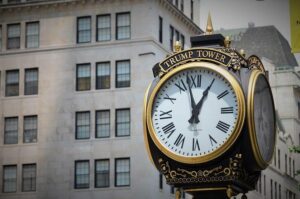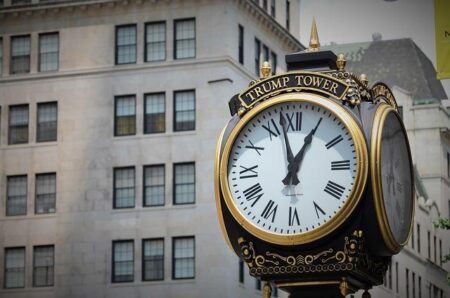Preserving the Truth: The Movement to Maintain Displays on George WashingtonŌĆÖs Slave Ownership
As the nation grapples with how to remember its founding figures, a growing coalition of activists and scholars is advocating for the preservation of public exhibits that candidly reveal George WashingtonŌĆÖs involvement in slavery. This movement highlights the urgent need to confront the full scope of AmericaŌĆÖs history, balancing respect for legacy with an honest acknowledgment of the injustices embedded in the countryŌĆÖs origins. The debate over these displays is part of a larger national dialogue about historical memory, racial justice, and the narratives we choose to elevate in public spaces.
Championing Transparency: Advocates Push to Keep WashingtonŌĆÖs Slave Ownership on Display
At the heart of this effort is a prominent museum exhibit that offers an unfiltered examination of George WashingtonŌĆÖs role as a slaveholder. Community leaders, historians, and descendants of enslaved people have united to defend the exhibitŌĆÖs continued presence, emphasizing its importance in educating the public about the complexities of the first presidentŌĆÖs legacy. They argue that confronting these difficult truths is essential for fostering a more truthful and inclusive understanding of American history.
Key reasons supporters highlight for maintaining the exhibit include:
- Enhancing educational honesty and promoting informed public conversations
- Bringing marginalized historical perspectives to the forefront
- Contributing to ongoing efforts aimed at racial healing and justice
| Exhibit Feature | Significance |
|---|---|
| Authentic Archival Records | Offer direct evidence of WashingtonŌĆÖs slaveholding practices |
| Engaging Interactive Elements | Encourage visitors to reflect and engage in meaningful dialogue |
| Community Voices | Elevate stories from descendants and activists |
Heightened Controversy: The Struggle Over How to Portray AmericaŌĆÖs Founding Father
In recent years, the conversation around George WashingtonŌĆÖs legacy has intensified, with some factions pushing to minimize or omit his connection to slavery from public narratives. In response, advocates have mobilized through protests, petitions, and partnerships with cultural institutions to ensure that these critical aspects of history remain visible and accessible. They warn that erasing or glossing over these facts risks perpetuating a distorted, overly sanitized version of the past that ignores systemic racial injustices rooted in the nationŌĆÖs foundation.
Efforts to preserve these narratives include demands for:
- Clear, transparent educational content that addresses WashingtonŌĆÖs slave ownership candidly
- Expanded museum sections dedicated to the lives and experiences of enslaved people
- Community-driven programs that explore the ongoing ramifications of slaveryŌĆÖs legacy
| Stakeholder | Role | Objective |
|---|---|---|
| Historians | Conduct and share rigorous research | Provide nuanced context to WashingtonŌĆÖs life and times |
| Activists | Lead public demonstrations and advocacy | Prevent historical erasure and promote truth-telling |
| Museums | Update and curate exhibits | Enhance educational impact and visitor engagement |
Contextualizing History: Experts Call for Comprehensive Educational Support
Academics and education specialists stress that presenting artifacts related to WashingtonŌĆÖs slaveholding without thorough context risks oversimplifying a deeply complex history. To cultivate a well-rounded understanding, they recommend supplementing exhibits with rich educational materials that explore:
- The political and social environment of 18th-century America
- WashingtonŌĆÖs changing perspectives on slavery over his lifetime
- The personal stories and conditions of enslaved individuals on his plantations
- The broader consequences for American civil rights and historical memory
Incorporating these elements can deepen public insight and encourage critical reflection. Suggested educational tools include guided tours, interactive workshops, and community forums designed to foster respectful and informed discussions.
| Educational Component | Purpose | Delivery Method |
|---|---|---|
| Historical Background Panels | Explain the context of slavery in colonial America | Informational displays and digital media |
| Personal Testimonies | Share narratives from enslaved individualsŌĆÖ perspectives | Audio recordings and written accounts |
| Interactive Learning Sessions | Engage visitors in critical thinking exercises | On-site workshops and virtual discussions |
| Community Dialogue Events | Facilitate conversations between experts and the public | Panel discussions and Q&A forums |
Fostering Healing: Community Leaders Advocate for Inclusive Conversations
Across the country, community organizers and leaders are calling for a more inclusive and thoughtful dialogue about the legacies of historical figures tied to slavery. They stress that facing uncomfortable realities is a necessary step toward genuine reconciliation and social healing. These leaders propose creating platforms that unite historians, descendants of enslaved people, educators, and policymakers to collectively acknowledge past wrongs and work toward restorative justice.
Among their key proposals are:
- Diverse Storytelling: Incorporating multiple perspectives to reflect the full complexity of historical narratives
- Curriculum Reform: Updating educational programs to include the nuanced realities of AmericaŌĆÖs founding era
- Grassroots Initiatives: Empowering local communities to lead commemorative and educational efforts
- Transparent Memorial Practices: Reevaluating monuments and exhibits to ensure they honor all affected groups with full context
| Goal | Strategy | Anticipated Result |
|---|---|---|
| Raise Public Awareness | Organize town halls and community forums | Enhanced understanding of historical complexities |
| Promote Equitable Education | Develop inclusive and comprehensive school curricula | More accurate and diverse historical education |
| Support Social Healing | Facilitate reconciliation workshops and dialogues | Stronger community bonds and mutual respect |
Conclusion: Upholding Historical Integrity in the Face of Controversy
As the nation continues to wrestle with the multifaceted legacy of its founding figures, the commitment of activists and scholars to preserving exhibits that truthfully depict George WashingtonŌĆÖs connection to slavery remains unwavering. Their advocacy highlights a broader movement toward transparency and inclusivity in historical representation, encouraging society to confront its past with honesty and empathy. The ongoing protection and enhancement of these displays will be vital in shaping a more informed and reflective public understanding of American history.







